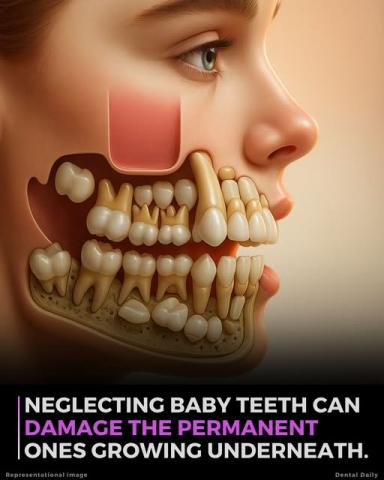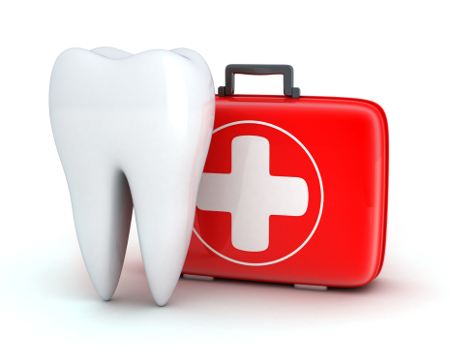Because Every Tooth Deserves Care.
It's Not 'Pang-Bata Lang': Why Ignoring Baby Teeth is Creating a Dental Crisis for Filipino Children
Topics teeth:
The Hidden Crisis in Our Barangays
Walk through any neighborhood in the Philippines, from bustling cities to isolated provincial areas, and you'll see them—children with bright smiles, but whose baby teeth may already be hiding a silent problem. In many communities, especially those with limited access to dental care, a dangerous myth persists: "Ngipin pang-bata lang 'yan, malalaglag din 'yan." (They're just baby teeth, they'll fall out anyway.)
This well-meaning but mistaken belief is one of the biggest contributors to a hidden epidemic: severe teeth alignment issues and long-term oral health damage in Filipino children. The truth is, what happens to those first teeth doesn't just stay in childhood—it shapes a child's smile for life.
The Unseen Damage: How a Cavity Today Can Ruin a Smile Tomorrow
The common thought is that a cavity in a baby tooth is just a small, temporary problem. The reality is far more serious. Think of baby teeth not as temporary placeholders, but as essential guides for the permanent teeth waiting beneath the gums.
When a baby tooth is lost too early due to decay or extraction, it's like removing a crucial signpost on a road. The teeth beside it can drift into the empty space, blocking the path for the permanent tooth trying to come up. The result? Crowding, crooked teeth, or even teeth that get stuck (impacted) entirely.
But the damage can go even deeper.
The roots of baby teeth sit like a cradle around the developing buds of the adult teeth. An untreated cavity is not just a hole in a tooth; it's a gateway for infection. This infection can travel down the roots and directly attack the permanent tooth underneath.
This can lead to:
-
Permanent Stains: The new adult tooth can erupt with white or brown spots.
-
Weak Enamel: The infection can disrupt the formation of the enamel, leaving the permanent tooth weak and prone to decay for its entire life.
-
Malformation: In severe cases, the tooth itself can become misshapen.
This means a simple, untreated cavity in a 4-year-old can permanently damage a tooth that won't even appear until they are 12.
Innovating for Change: A New Approach to Our Children's Smiles
Solving this crisis requires moving beyond traditional scolding and towards innovative, community-based solutions. Here’s how we can reframe the approach:
1. Reframe the Language: From "Baby Teeth" to "Guide Teeth"
Let’s change the terminology we use. Calling them "Guide Teeth" (Ngipin Gabay) instantly communicates their true purpose. It helps parents visualize their critical role in guiding the permanent teeth into their correct positions.
2. The "See-Saw" Analogy for Communities
Explain the situation using a simple analogy everyone understands: a see-saw.
-
Side A (The Problem): Early tooth loss → No space for adult teeth → Costly braces and extractions later.
-
Side B (The Solution): Protecting baby teeth → Healthy guides for adult teeth → Straight teeth, fewer procedures, and big savings.
Investing a little time and care now (Side B) prevents a heavy financial and health burden later (Side A).
3. Community-Based "Smile Guardian" Programs
Innovation lies in access. We can champion:
-
School-Based Dental Screenings: Partnering with local barangay health workers to identify problems early.
-
"Super Tooth" Storybooks: Creating culturally relevant comics or stories for children that personify "Guide Teeth" as heroes protecting the "Sleeping Tooth Giants" underneath.
-
Text-Blast Reminders: Simple, free SMS messages to parents reminding them about oral hygiene tips and free clinic days.
A Call to Action: Protecting the Future, One Smile at a Time
The message is clear: Caring for baby teeth is not a minor chore; it is a critical investment in a child's future. It is about preventing pain, avoiding complex and expensive orthodontic treatments later, and ensuring our children grow up with the confidence that comes from a healthy smile.
What You Can Do Today:
-
For Parents: Wipe your infant's gums. Brush your toddler's teeth twice daily with a rice-grain-sized amount of fluoride toothpaste. Limit sugary drinks and snacks.
-
For Community Leaders: Advocate for oral health education in schools and support local dental missions.
-
For Everyone: Share the truth. Correct the myth when you hear it. Explain that those "little teeth" have a very big job to do.
Let's work together to shift the mindset. The health of our children's first teeth is the foundation for a lifetime of healthy smiles. By protecting their "Guide Teeth," we are not just treating cavities—we are building a straighter, healthier, and more confident future for the next generation of Filipinos.
healthy food:





